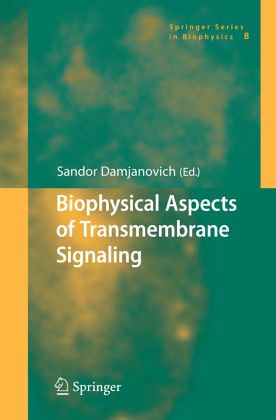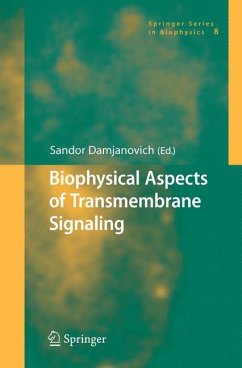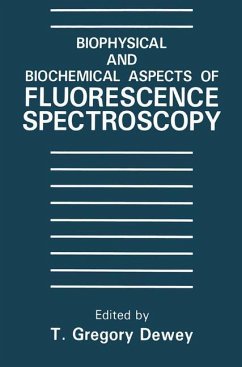
Biophysical Aspects of Transmembrane Signaling

PAYBACK Punkte
57 °P sammeln!
Transmembrane signaling is one of the most significant cell biological events in the life and death of cells in general and lymphocytes in particular. Until recently biochemists and biophysicists were not accustomed to thinking of these processes from the side of a high number of complex biochemical events and an equally high number of physical changes at molecular and cellular levels at the same time. Both types of researchers were convinced that their findings are the most decisive, having higher importance than the findings of the other scientist population. Both casts were wrong. Life, eve...
Transmembrane signaling is one of the most significant cell biological events in the life and death of cells in general and lymphocytes in particular. Until recently biochemists and biophysicists were not accustomed to thinking of these processes from the side of a high number of complex biochemical events and an equally high number of physical changes at molecular and cellular levels at the same time. Both types of researchers were convinced that their findings are the most decisive, having higher importance than the findings of the other scientist population. Both casts were wrong. Life, even at cellular level, has a number of interacting physical and biochemical mechanisms, which finally build up the creation of an "excited" cell that will respond to particular signals from the outer or inner world.
This book handles both aspects of the signalling events, and in some cases tries to unify our concepts and help understand the signals that govern the life and death of our cells. Not only the understanding, but also the interference (e.g. medication) may depend on the full knowledge of both sides.
These above statements are supported by the application of highly diverse physical and biochemical technologies demonstrated and explained by experts who are pioneers of their particular scientific field.
This book handles both aspects of the signalling events, and in some cases tries to unify our concepts and help understand the signals that govern the life and death of our cells. Not only the understanding, but also the interference (e.g. medication) may depend on the full knowledge of both sides.
These above statements are supported by the application of highly diverse physical and biochemical technologies demonstrated and explained by experts who are pioneers of their particular scientific field.














